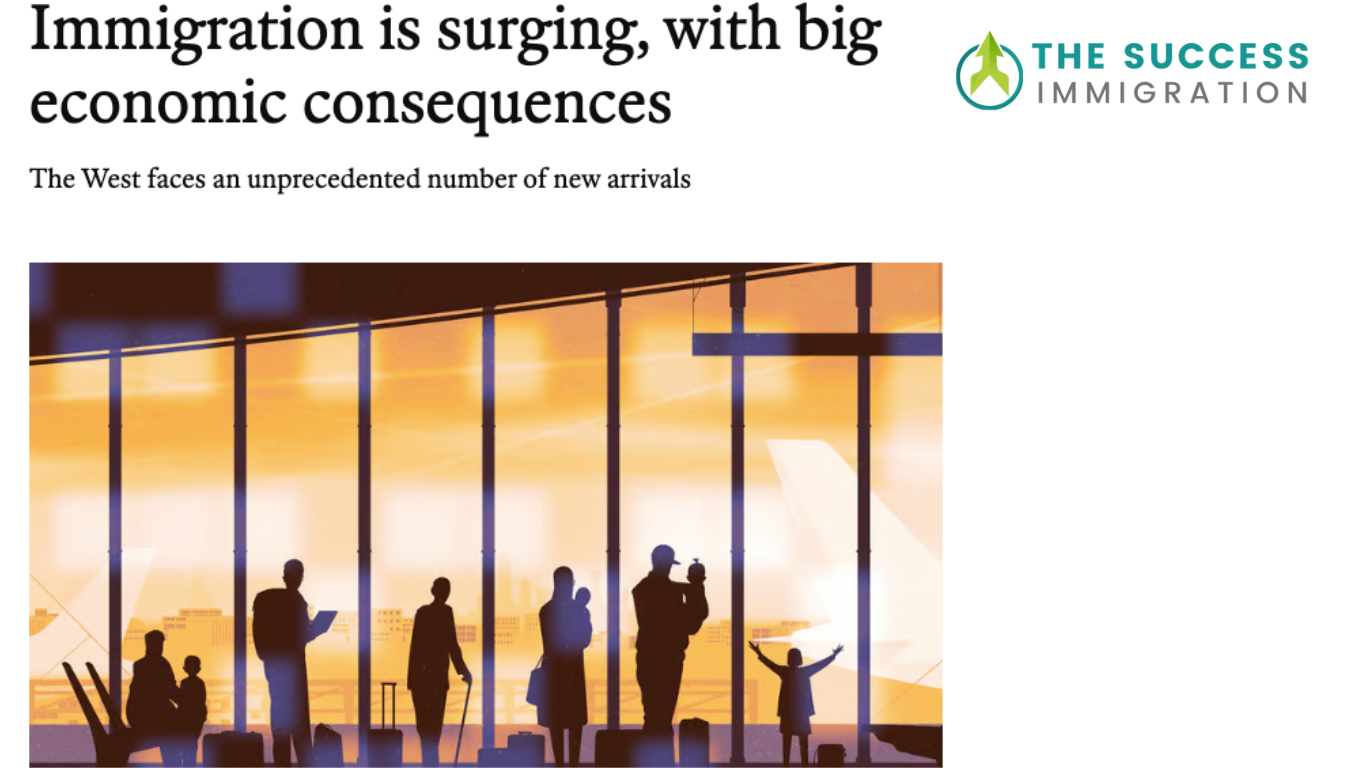Call us now:
Immigration surge: Is always a double-edged sword

The article discusses a significant increase in migration to wealthy countries like the United States, Canada, Britain, and Australia. This surge in immigration has notable economic consequences, including impacts on GDP, inflation, living standards, and government budgets.
Key points from the article include:
- Migration Numbers: Last year saw a substantial rise in immigration to wealthy nations, with 3.3 million more people moving to America, 1.9 million to Canada, 1.2 million to Britain, and 740,000 to Australia.
- Economic Impact: Immigrants are affecting the economies of these countries, with the IMF noting a 9% increase in America’s foreign-born labor force since 2019 and similar trends in Britain, Canada, and the eurozone. This influx is contributing to economic growth but also impacting inflation, living standards, and government finances.
- Low-Skilled Immigration: Recent migrants are more likely to be low-skilled, which has implications for industries and wage dynamics. Some sectors are benefiting from immigrant labor, but others, like construction, are struggling to attract skilled workers.
- GDP per Person: While immigration boosts overall GDP, it can lower GDP per person, affecting living standards. However, some argue that immigrants taking lower-wage jobs can free up locals for higher-paying roles, leading to more economic diversity and specialization.
- Public Services and Fiscal Impact: Immigration’s impact on public services and government budgets varies. High-skilled immigrants often contribute positively, but low-skilled migrants may strain public resources in the long term, especially as they age and require more support.
- Policy Challenges: The article highlights policy challenges such as ensuring infrastructure and services can accommodate the influx of migrants. Excessive regulation in areas like housing can exacerbate issues related to migration.
Overall, the article emphasizes the complex and multifaceted impacts of immigration on economies, societies, and public services in wealthy nations.
This article talks about the issues with immigration today. It’s always been hard to pinpoint one specific problem because we all know immigrants help the economy by contributing. However, there’s another side to this. The article and our experiences show that there are problems like rental issues in places like Canada and Australia due to too many immigrants. It’s not just rentals;
We have also witnessed inflation, but it’s not solely because of migrants or immigrationThere are other reasons, to name one like countries not being strict enough with filtering skilled workers, which also leads to illegal immigration.
It also mentions how there are fewer illegal immigrants in countries like Canada and Australia compared to the USA. But the big issue is some people misuse the law and rules to migrate illegally, taking advantage of loopholes in the process. This can be seen in cases like Canada’s Start-up Visa and student visas. When the government sees these problems, they change policies, affecting everyone, especially genuine migrants.
The article also explains how immigration affects a country’s economy. It says that while immigrants boost the overall economy, the GDP per person, which shows how well-off people are on average, goes down. Which is definitely not a good sign!
I’ve talked about this in another article,The economic impact of the US immigration surge: a double-edged sword Article Link saying that with the current situation, it’s like a double-edged sword, as we dig deeper into the matter.
I’ve highlighted some key points from the article, and it’s a good read, giving a better understanding of the situation compared to ‘The Wall Street Journal,’ and the best part is, you don’t need a subscription!
Disclaimer
This article contains insights and commentary on the article “Immigration is surging, with big economic consequences” authored and published on “The Economist” The purpose of this article is to provide analysis, discussion, and additional perspectives on the subject matter.
Here is the article link on this topic
This content is shared under the principles of fair use for the purpose of commentary, criticism, and education. No commercial gain is intended through the use of this content.



